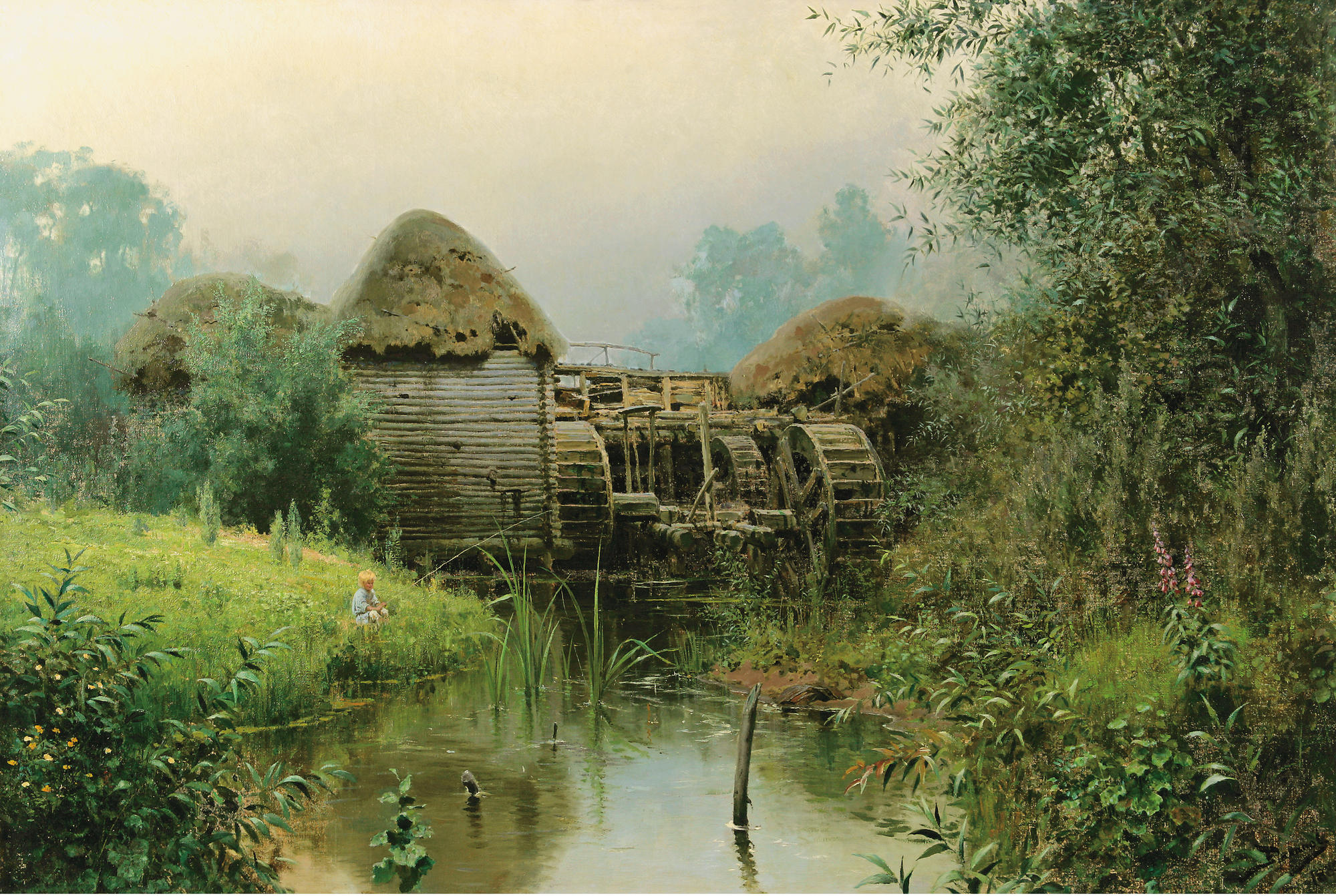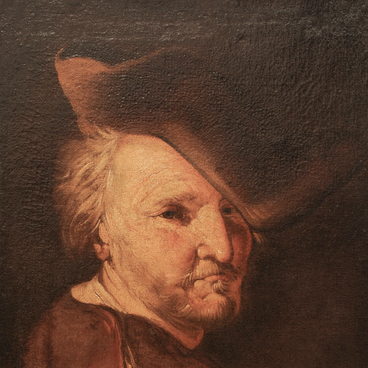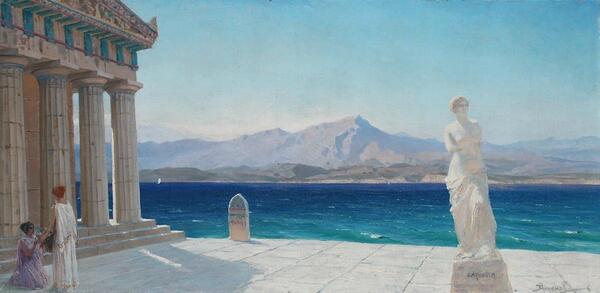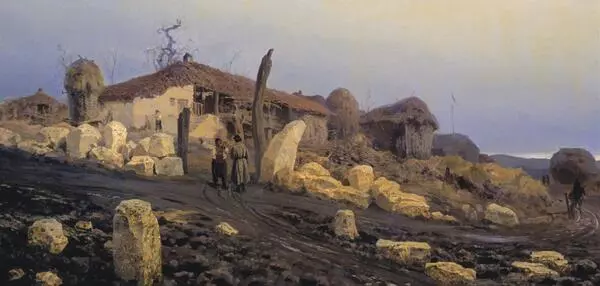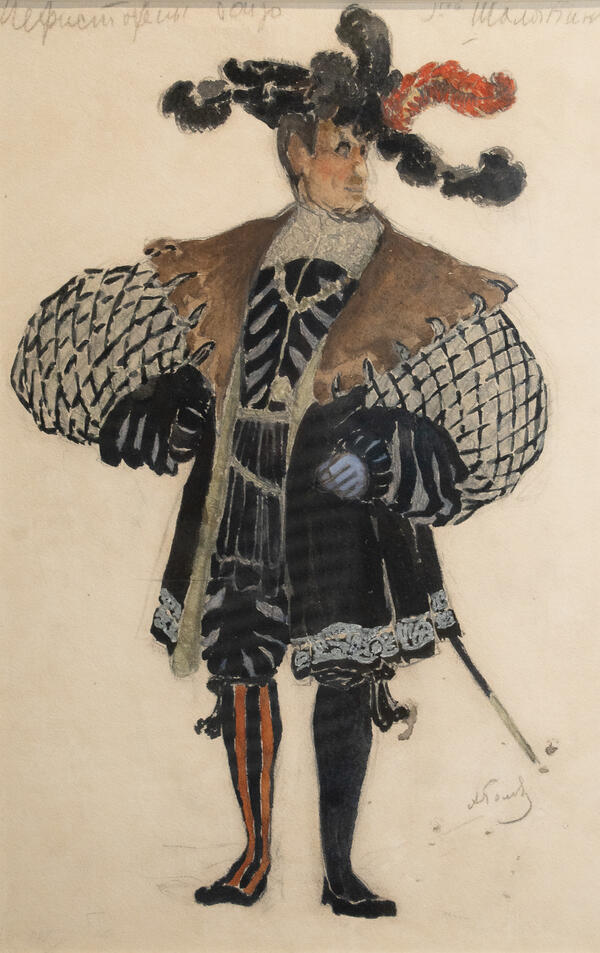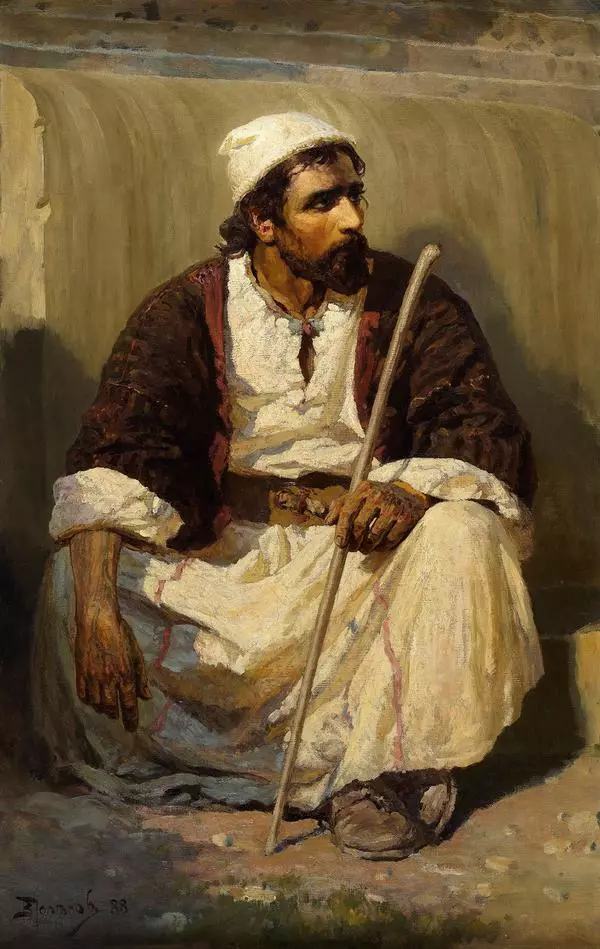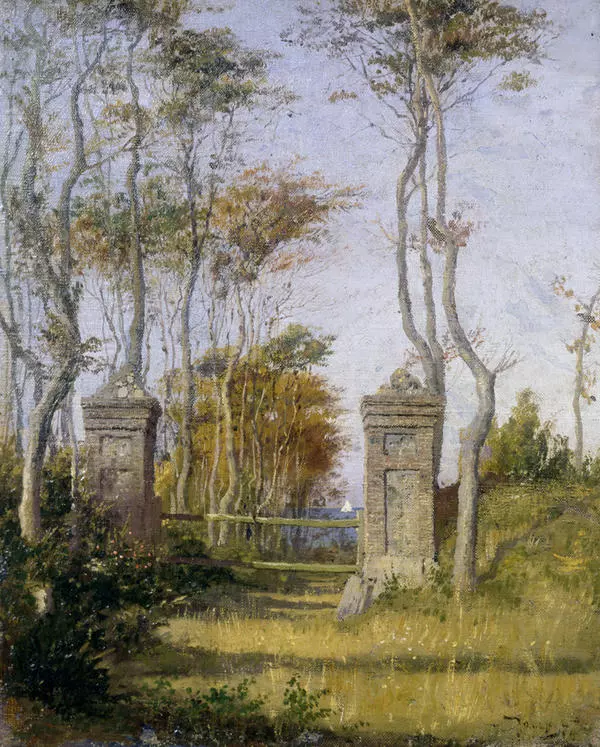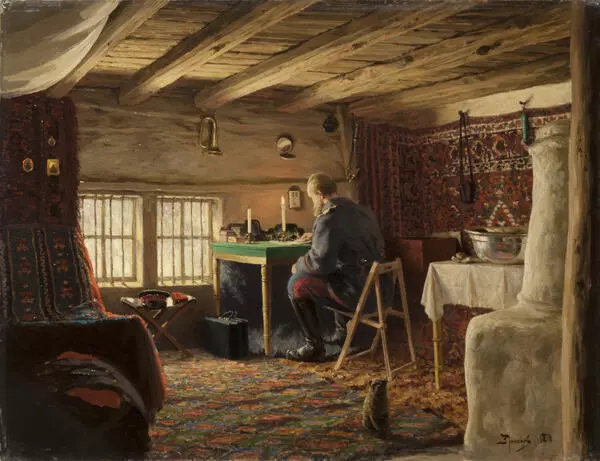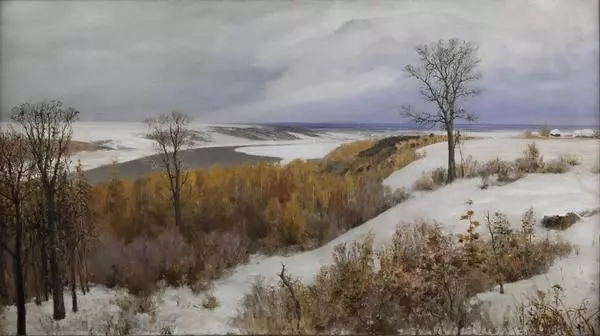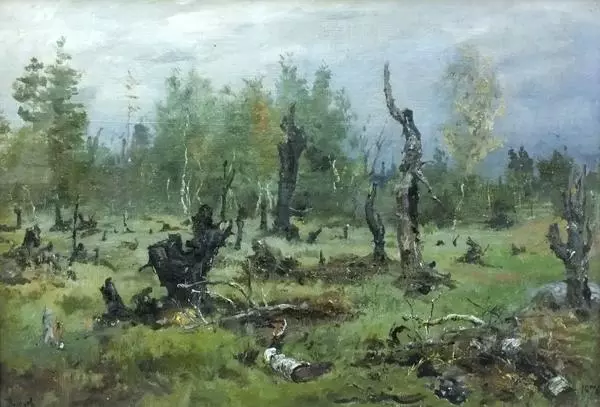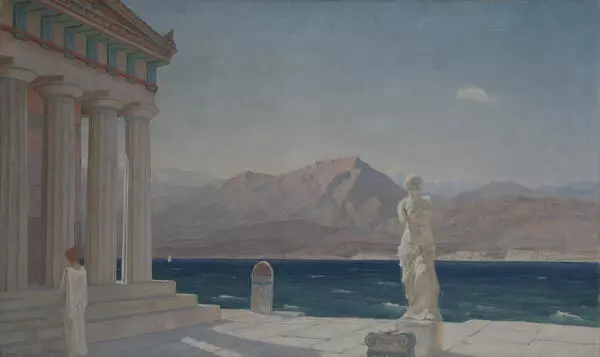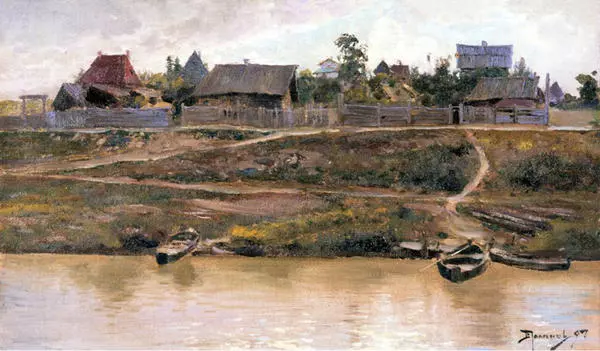The reformer of Russian landscape painting, better known as Vassily Polenov, in 1870 -1880s turned to detached landscapes. His works of that time period are characterized by richness of nature and high level of object detail. That was achieved by reinterpretation of outdoor sketches as authentic creations. Such an approach allowed to better reflect the natural atmosphere and influence of light and air on the colors of the moment.
It would be difficult to disagree with the apprehension of Polenov’s works by Ilya Ostroukhov, who once wrote, after a thematic exhibition: “… unexpectedly new, fresh, imbued with truth, delicate musical lyricism and exquisite technique”.
Nowadays, Polenov’s paintings A Weedy Pond, The Grandma’s Garden and A Moscow Yard are kept in Russia, while Winter. Imochentsy and In a Boat. Abramtsevo, in Ukraine.
An item of the series was An Old Mill completed in 1880. The artist is likely to have painted that work in his parents’ estate located in the Leningrad Region.
In the painting, one can see a summer morning with vague fog. The sun is covered from the viewer, however it can be traced in the glittering dew. In the center of the painting there is an abandoned building with a worn-out thatch roof, rundown frame and blackened logs. On the left side of the composition there is a bright meadow, on the right side, wild growing trees and shrubs.
The painter predominantly used light brushstrokes with oil paints, with the undercoat grinning through in places. Only the grass on the river bank was honored with several solid layers of paint.
All the above plays into the concept of the ‘intimate landscape’, the pioneer of which is believed to be Vassily Polenov. In the given painting, the artist summed up the state of elements observed in nature. For instance, of the still sleepy mirror-like water surface.
It is worth mentioning that in the Russian culture water mills used to have doubtful reputation. First, according to the folklore, a water elf could live nearby, pretending to be a fish for its wicked purposes. Second, mills united human labor and elements of nature, however in a way that was enigmatic, and therefore suspicious, for many local residents. Peasants’ attitude towards blacksmiths and other masters of various mechanisms was matching. Third, abandoned buildings were sometimes used as sceneries for local legends, as a rule, dramatic and didactic.
In this context, of interest is a figure of the fair-haired boy who is calmly holding a fishing rod in his hands. It is fair to assume that the child has backed down from superstitions and ignorance in favor of fishing.
It would be difficult to disagree with the apprehension of Polenov’s works by Ilya Ostroukhov, who once wrote, after a thematic exhibition: “… unexpectedly new, fresh, imbued with truth, delicate musical lyricism and exquisite technique”.
Nowadays, Polenov’s paintings A Weedy Pond, The Grandma’s Garden and A Moscow Yard are kept in Russia, while Winter. Imochentsy and In a Boat. Abramtsevo, in Ukraine.
An item of the series was An Old Mill completed in 1880. The artist is likely to have painted that work in his parents’ estate located in the Leningrad Region.
In the painting, one can see a summer morning with vague fog. The sun is covered from the viewer, however it can be traced in the glittering dew. In the center of the painting there is an abandoned building with a worn-out thatch roof, rundown frame and blackened logs. On the left side of the composition there is a bright meadow, on the right side, wild growing trees and shrubs.
The painter predominantly used light brushstrokes with oil paints, with the undercoat grinning through in places. Only the grass on the river bank was honored with several solid layers of paint.
All the above plays into the concept of the ‘intimate landscape’, the pioneer of which is believed to be Vassily Polenov. In the given painting, the artist summed up the state of elements observed in nature. For instance, of the still sleepy mirror-like water surface.
It is worth mentioning that in the Russian culture water mills used to have doubtful reputation. First, according to the folklore, a water elf could live nearby, pretending to be a fish for its wicked purposes. Second, mills united human labor and elements of nature, however in a way that was enigmatic, and therefore suspicious, for many local residents. Peasants’ attitude towards blacksmiths and other masters of various mechanisms was matching. Third, abandoned buildings were sometimes used as sceneries for local legends, as a rule, dramatic and didactic.
In this context, of interest is a figure of the fair-haired boy who is calmly holding a fishing rod in his hands. It is fair to assume that the child has backed down from superstitions and ignorance in favor of fishing.
